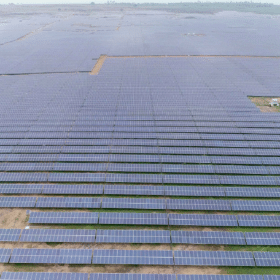India again ranked the world’s most attractive solar market by Ernst & Young

The nation maintained the highest score of 62.7 for solar in the latest edition of Ernst & Young’s renewables attractiveness index. It ranked third for overall renewable energy investment.
London-based Ernst & Young (EY) has again ranked India as the most attractive destination for solar PV investment and deployment in its latest Renewable Energy Country Attractiveness Index.
India scored 62.7 in solar attractiveness, with the sector expected to grow significantly and with generation from solar PV forecast to exceed coal before 2040.
The EY Index lists the top 40 countries by renewable energy investment and deployment attractiveness. It considers individual categories of solar PV, solar CSP, on-shore wind, offshore wind, biomass, geothermal and hydro to arrive at the overall score for renewables.
For overall renewables, the USA remained the most attractive destination, followed by China.
EY expects the USA to hold its top spot for renewables attractiveness under President Biden as it noted, “The reacceptance of the Paris Accord, coupled with the recent announcement to cut GHG levels by 50-52% as early as 2030 and achieve 100% carbon-free power by 2035, will likely see increased investment interest in the US.”
China’s position was helped with the addition of 72.4 GW of new wind power in 2020 as developers rushed to beat an on-shore wind subsidy cut.
India rose one place to rank third in the overall renewables rankings.
China and the USA also maintained their attractiveness for solar, ranking second (with a 60.3 score) and third (57.6), respectively. Australia ranked fourth (56.1), followed by Egypt (54.4) and Israel (53.9).
Egypt’s score was helped with the nation’s ambition to increase the supply of energy generated from renewable sources to 42% by 2035. Out of this, it intends solar PV to provide approximately 25%, on-shore wind 14% and hydropower 2%.
The United Kingdom climbed up one place to rank fourth for renewables investment. The rise was driven by close to 8 GW of new offshore wind capacity allotted for development, and the government’s consent for the development of the largest battery-storage project and £92m in funding for innovative green technologies.
France’s renewables ranking improved to fifth place from seventh last year.

